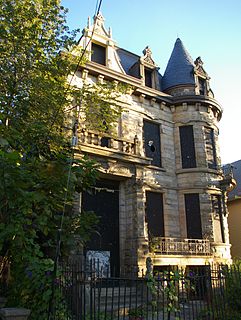
Franklin Castle is a Victorian stone house, built in the American Queen Anne style, located at 4308 Franklin Boulevard in Cleveland's Ohio City neighborhood. The building has four stories and more than twenty rooms and eighty windows. In the late nineteenth century, when it was built, Franklin Boulevard was one of the most prestigious residential avenues in Cleveland. It is reported to be the most haunted house in Ohio.
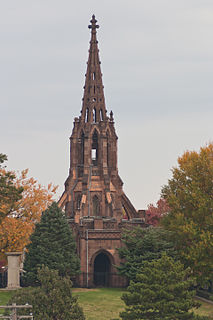
John Rudolph Niernsee was an American architect. He served as the head architect for the Baltimore and Ohio Railroad. Rudolph also largely contributed to the design and construction of the South Carolina State House located in Columbia, South Carolina. Along with his partner, James Crawford Neilson, Rudolph established the standard for professional design and construction of public works projects within Baltimore and across different states in the United States.

This is a list of the National Register of Historic Places listings in Cleveland, Ohio.

The Shrine Church of St. Stanislaus is the home of a Catholic parish within the Diocese of Cleveland. St. Stanislaus is one of the major historic centers of Polish life in Cleveland, Ohio, especially for Poles with roots in Warsaw and surrounding areas, and is often called the mother church for Cleveland's Polish population. The shrine is located at the intersection of Forman Ave. and East 65th St., in a part of the South Broadway neighborhood previously known as Warszawa; today the area is known as Slavic Village. The church, the neighborhood, and the larger surroundings are GNIS named features.

Tremont is a neighborhood on the West Side of Cleveland, Ohio. Listed on the National Register of Historic Places, the district sits just south of the Ohio City neighborhood. It is bounded by the Cuyahoga Valley to the north and east, MetroHealth medical center to the south, and West 25th Street and Columbus Road to the west.
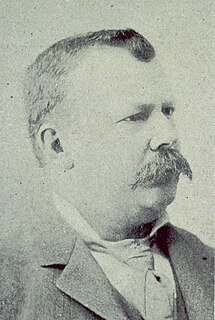
Joseph Warren Yost (1847–1923) was a prominent architect from Ohio whose works included many courthouses and other public buildings. Some of his most productive years were spent as a member of the Yost and Packard partnership with Frank Packard. Later in his career he joined Albert D'Oench at the New York City based firm D'Oench & Yost. A number of his works are listed for their architecture in the U.S. National Register of Historic Places (NRHP).
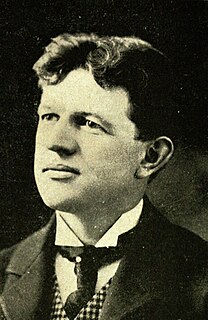
Frank L. Packard was a prominent architect in Ohio. Many of his works were under the firm Yost & Packard, a company co-owned by Joseph W. Yost.

Charles Frederick Schweinfurth was a prominent architect in Cleveland, Ohio. His brother Julius Schweinfurth was also an architect and they did some projects as a partnership.

The DeCurtins family, sometimes written De Curtins, were involved in Midwestern U.S. church architecture. Anton De Curtins was a Swiss immigrant who lived in Carthagena, Ohio and designed several Gothic Revival architecture churches in Mercer County, Ohio, as well as rectories, schools and residences. Anton was a master carpenter, and with his sons he directed the building and decorating of the steepled churches that "still shine across the surrounding flatness of the Northwestern Ohio landscape".
Coburn & Barnum was a Cleveland, Ohio architectural firm from 1878 to 1897. It was established by Forrest A. Coburn and Frank Seymour Barnum. The firm also included W. Dominick Benes and Benjamin S. Hubbell for one year and was known as Coburn, Barnum, Benes & Hubbell until 1897, when Benes and Hubell departed to establish their own firm Hubbell & Benes. After their departure and Coburn's death, Barnum formed F. S. Barnum & Co. with Albert Skeel, Harry S. Nelson, Herbert Briggs, and Wilbur M. Hall. Barnum also served as consulting architect to the Cleveland Board of Education. He retired in 1915 having designed more than 75 school buildings, the Caxton Building (1903) and the Park Building (1904), an early example of reinforced concrete floor slabs. The firm continued after his 1915 retirement under the name of Briggs & Nelson.
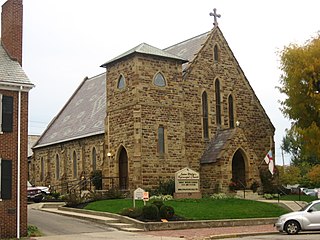
Howell & Thomas was an American architectural partnership formed by Carl Eugene Howell (1879–1930) and James William Thomas, Jr. (1876–1973) in Columbus, Ohio, and later, Cleveland, Ohio, that designed many residences for wealthy clients between 1908 and 1930. The partners were classmates at University of Pennsylvania and first established their practice in Columbus, Ohio. They designed homes for the Euclid Golf subdivision along Fairmont Boulevard in Cleveland Heights, built on the site of John D. Rockefeller's once private course.
St. Joseph's Church and Friary was a historic church at 2543 E. 23rd Street at Woodland in Cleveland, Ohio. It was designed by architects Cudell & Richardson, built in 1873, and added to the National Register of Historic Places in 1976.
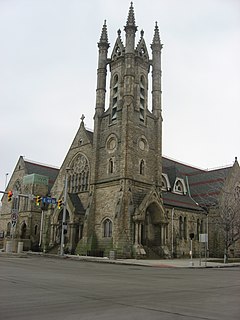
The former St. Paul's Episcopal Church is a historic church in Cleveland, Ohio, United States. Built for an Episcopal parish by a well-known architect, it became a prominent component of the city's wealthy Millionaire's Row, due to its grand architecture. Although vacated by its original owners in the 1920s, it was soon bought by a Catholic monastic group that occupies it into the present day. It was named a historic site in 1980.
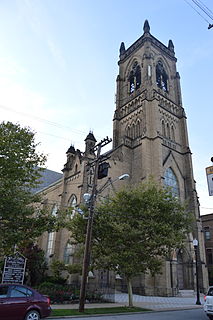
St. Stephen Church is a Roman Catholic church located in the Detroit-Shoreway neighborhood on the west side of Cleveland, Ohio. The gothic style building was designed by architects Cudell & Richardson. The current church was built in 1875 and was added into the National Register of Historic Places in 1977.

Frank W. Gibb was an architect in Little Rock, Arkansas.

St. John The Baptist Roman Catholic Church is a historic church at Ohio 694 and Main Street in Glandorf, Ohio. It was built in 1875 and added to the National Register in 1977.

Hubbell & Benes was a prominent Cleveland, Ohio architectural firm formed by Benjamin Hubbell (1857–1935) and W. Dominick Benes (1867–1953) in 1897 after the pair departed from Coburn, Barnum, Benes & Hubbell. Their work included commercial and residential buildings as well as telephone exchange buildings, the West Side Market and Cleveland Museum of Art. Before teaming up, they worked for Coburn and Barnum. Benes was Jeptha Wade’s personal architect and designed numerous public buildings, commercial buildings, and residences for him including the Wade Memorial Chapel.

St. Mary's on the Flats, originally known as the Church of Our Lady of the Lake, was the first Catholic church building in Cleveland, Ohio. The location where the church once stood can be found, in an 1881 atlas, at the south-east corner of Columbus Ave. and then Girard Ave. on the east bank of the Cuyahoga river in the flats. Irishtown Bend Archeological District, where many of the parishioners lived, lies to the west, across the Cuyahoga river in what was Ohio City. Ohio City was annexed by Cleveland on June 5, 1854.
St. Barbara Catholic Church is a parish of the Roman Catholic Church in Cleveland, Ohio, within the Diocese of Cleveland. The parish church is located on Denison Ave. between West 16th St. and the southbound entrance to SR 176, in a part of the Brooklyn Centre neighborhood previously known in Polish as na Barbarowie.

The Perry–Payne Building is a historic commercial building in downtown Cleveland, Ohio, United States in the city's historic Warehouse District. Designed by prominent architects for a leading politician, it gained national attention as an architectural masterpiece upon its completion. Long home to the offices of manufacturing and transportation companies, it has been named a historic site.

















